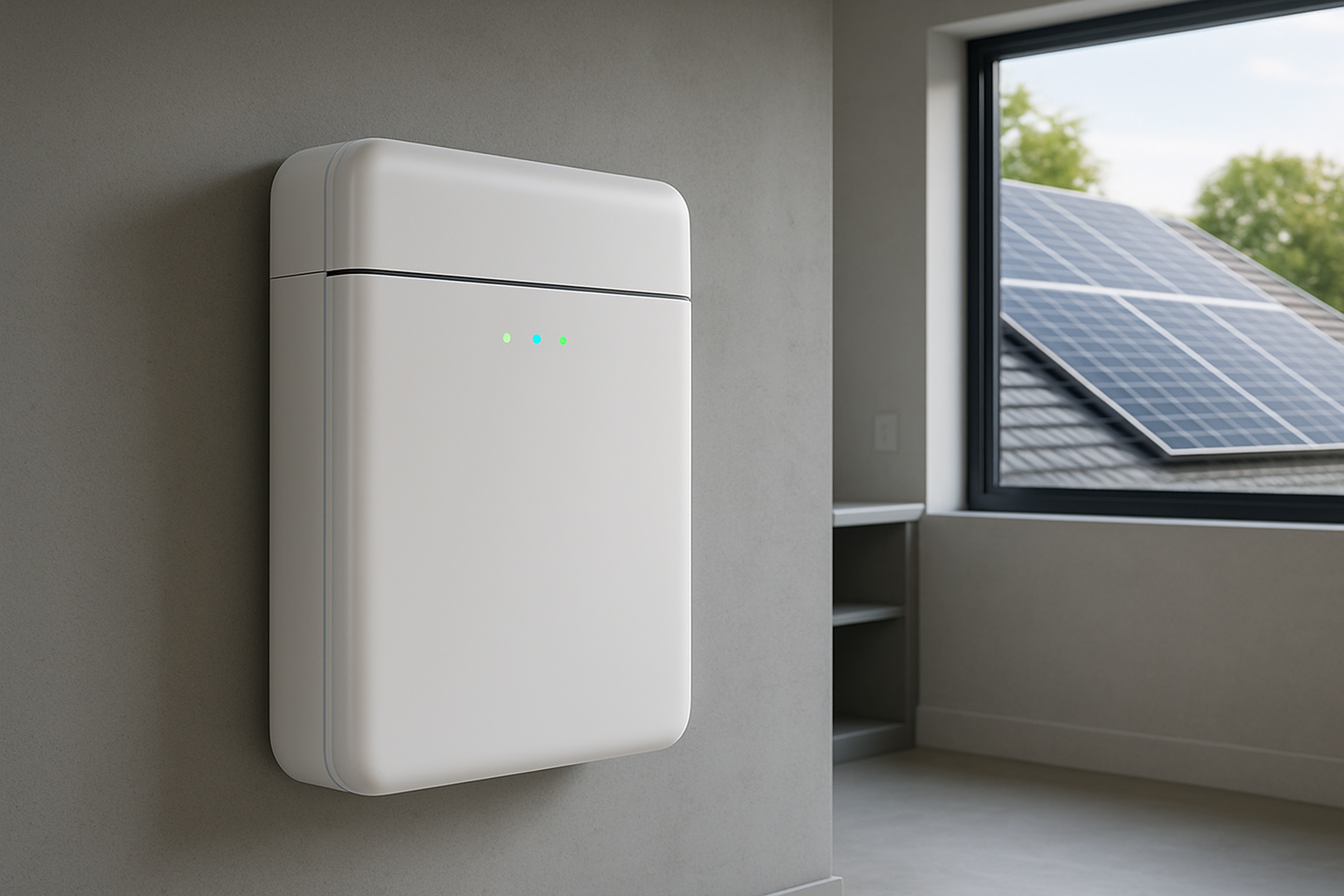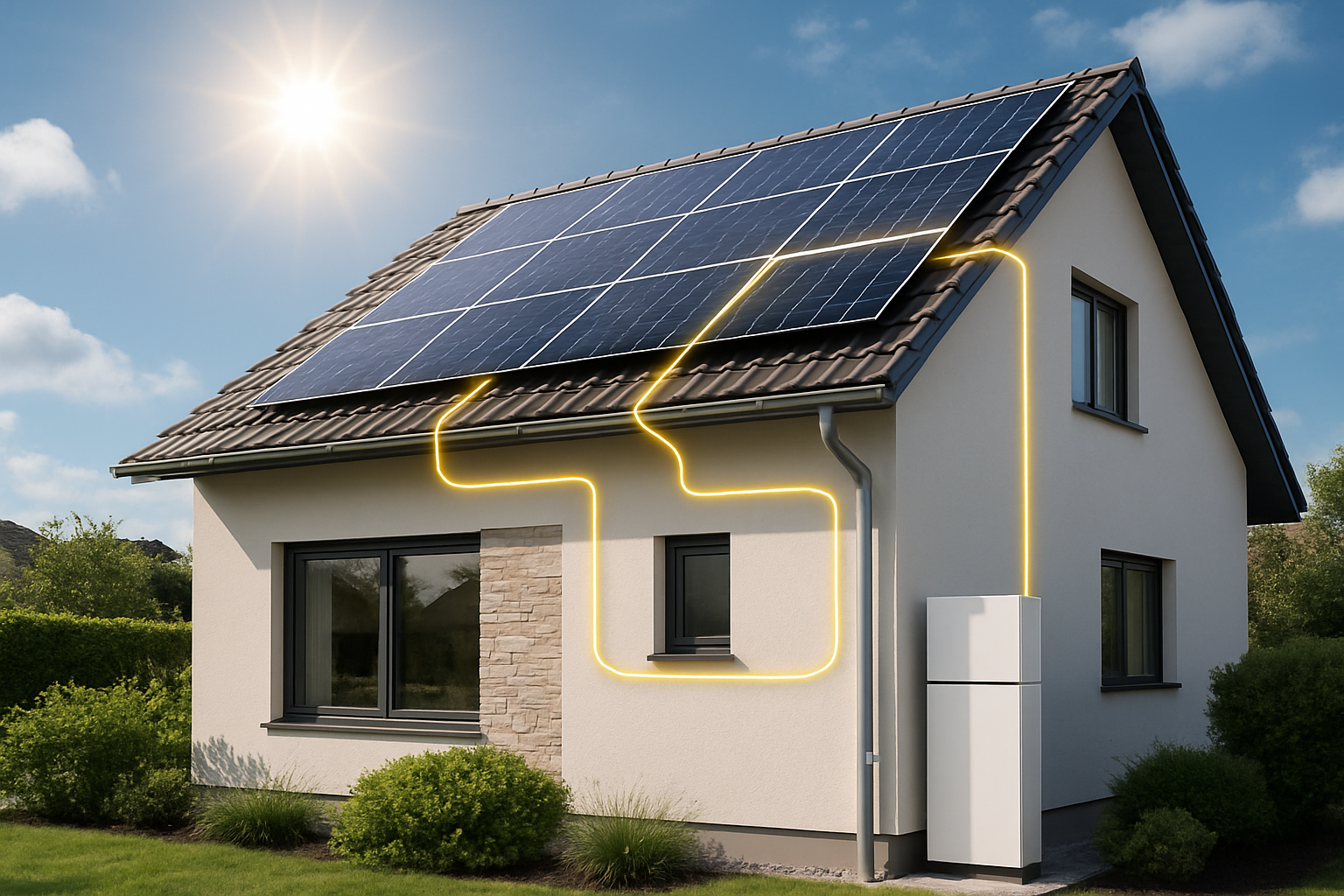Achieving energy independence and maximizing the return on your solar investment are key goals for many property owners. While traditional solar photovoltaic (PV) systems offer clear benefits, integrating battery storage transforms these advantages. This strategic combination, known as a PV+Battery hybrid system, significantly improves system economics, often reducing the payback period by several years.

The Synergy of Solar and Storage
Solar energy has long offered a path to reduced electricity bills and a smaller environmental footprint. Early solar installations primarily focused on generating electricity during daylight hours, often feeding excess power back to the grid. While effective, this approach had limitations, particularly when the sun was not shining or during peak demand periods when grid electricity prices were high.
Limitations of Standalone PV
Standalone solar PV systems generate power when the sun is available. This means that during cloudy days, at night, or when electricity demand peaks outside of solar generation hours, you must draw power from the grid. This reliance can diminish potential savings and limit true energy independence. Curtailment, where excess solar generation cannot be used or exported, also presents a challenge, leading to wasted energy potential.
Advantages of Hybrid Systems
Hybrid systems combine solar PV with battery storage, offering a more robust and flexible energy solution. These systems store surplus solar energy generated during the day for use at night or during peak demand. This capability enhances grid flexibility and reduces curtailment, allowing electricity to shift to periods of higher demand or market value.
Reliable lithium iron phosphate (LiFePO4) batteries are central to these systems, offering high performance and safety. Integrated energy storage systems bring together LiFePO4 batteries, hybrid inverters, and solar panels into a cohesive unit. For properties without reliable grid access, off-grid solar solutions provide complete energy autonomy, powering homes, farms, and remote cabins.
Accelerating Your Energy Investment Return
Understanding the financial metrics of your solar investment is crucial. Two key indicators are the payback period and the return on investment (ROI). The payback period tells you how long it takes for the savings from your system to equal its initial cost. ROI measures the profitability of your investment over its lifespan.
Calculating Solar ROI
Calculating solar ROI involves assessing the total cost of the system against the energy savings and any incentives received over its operational life. For standalone PV, this calculation is relatively straightforward, primarily focusing on kilowatt-hour (kWh) savings from grid reliance. However, hybrid systems introduce additional layers of value.
Factors Affecting Payback
Several factors influence the payback period of a solar system, including installation costs, local electricity rates, available incentives, and your energy consumption patterns. With a PV+Battery hybrid system, the ability to store and dispatch energy strategically adds significant value. This significantly impacts the speed at which your system pays for itself.
For example, while early battery storage systems faced challenges with high prices, with some small systems starting at USD 1,100 per kilowatt-hour (kWh) in 2016, making profitability challenging for homeowners due to extended payback times, modern advancements in battery technology have improved their economic viability.
Economic Advantages of Integrated Systems
The true economic benefit of a battery in an energy system depends on its operation within a specific electricity market. This requires detailed modeling of demand, supply conditions, grid constraints, and market rules.
Enhancing Grid Reliability and Value
Batteries add substantial value to renewable energy systems. They enable the shifting of electricity from times of high generation to periods of high demand or market value. This capability improves grid reliability, reduces energy curtailment, and facilitates critical functions such as energy arbitrage and frequency regulation.
For instance, hybrid projects combining solar, wind, and battery storage in Australia reported a significantly lower weighted average Levelized Cost of Electricity (LCOE) of USD 0.051/kWh. This figure aligns favorably with or falls below the LCOE of traditional power sources like combined-cycle gas turbines (USD 0.077/kWh) and coal (USD 0.119/kWh).
Overcoming LCOS Challenges
Estimating the Levelized Cost of Storage (LCOS) for standalone energy storage projects presents challenges. The economic viability of these systems depends on their operational profile within a specific electricity market, their response to price signals, and their performance of functions like energy arbitrage and frequency regulation. Each application affects battery charge-discharge cycles, degradation rates, and revenue streams, making a universal cost metric complex.
However, hybrid systems address these complexities by integrating generation and storage. While charging and discharging incur efficiency losses (typically around 90% round-trip efficiency), the ability to shift energy increases the usable share of renewable output, especially during periods of low generation or high demand.
The greater the storage-to-generation capacity ratio, the more significant the improvement in effective capacity utilization. This comes with an investment cost in the battery energy storage system (BESS), which must be weighed against the increased revenue or reliability benefits provided by storage.
Practical Applications and Realized Benefits
The shift towards PV+Battery hybrid systems provides tangible benefits across various applications, from residential homes to agricultural operations.
Residential and Commercial Use Cases
For homeowners, a hybrid system means greater self-consumption of solar energy. Instead of sending excess power to the grid at low rates and buying it back at higher peak rates, you store it for your own use. This direct utilization of self-generated power maximizes savings and reduces dependence on utility companies. Businesses can leverage these systems for peak shaving, reducing demand charges and optimizing energy costs during high-tariff periods.
Energy Independence and Resilience
Beyond financial savings, hybrid systems offer enhanced energy resilience. In the event of grid outages, a properly sized system can provide backup power, ensuring essential appliances remain operational. This capability is particularly valuable for off-grid applications where reliable power is paramount. Our solar inverters play a crucial role in converting the direct current (DC) power from panels and batteries into usable alternating current (AC) for your home or business.
Consider the potential impact on payback periods:
| System Type | Key Benefit | Estimated Payback Period (Illustrative) |
|---|---|---|
| Standalone Solar PV | Reduced electricity bills, grid export | 5-8 Years |
| PV+Battery Hybrid | Maximized self-consumption, peak shaving, backup power, energy arbitrage | 2-5 Years (potentially 3-5 years shorter than standalone PV) |
Charting a Path to Energy Independence
PV+Battery hybrid systems represent a significant leap forward in energy management. By seamlessly integrating solar generation with advanced battery storage, these systems offer a more efficient, reliable, and economically attractive path to energy independence. The ability to store and dispatch energy strategically not only enhances system performance but also significantly reduces the time it takes to recoup your initial investment.
As the solar and storage industries continue to evolve, reliable and scalable energy solutions become increasingly vital. Embracing these integrated approaches empowers you to take control of your energy future, ensuring both financial returns and peace of mind.
***
- Renewable Power Generation Costs in 2024, IRENA, 2025.
- Renewable Power Generation Costs in 2024, IRENA, 2025.
- Medium-Term Renewable Energy Market Report 2016, IEA, 2016.
- Renewable Power Generation Costs in 2024, IRENA, 2025.
- Renewable Power Generation Costs in 2024, IRENA, 2025.





Leave a comment
All comments are moderated before being published.
This site is protected by hCaptcha and the hCaptcha Privacy Policy and Terms of Service apply.